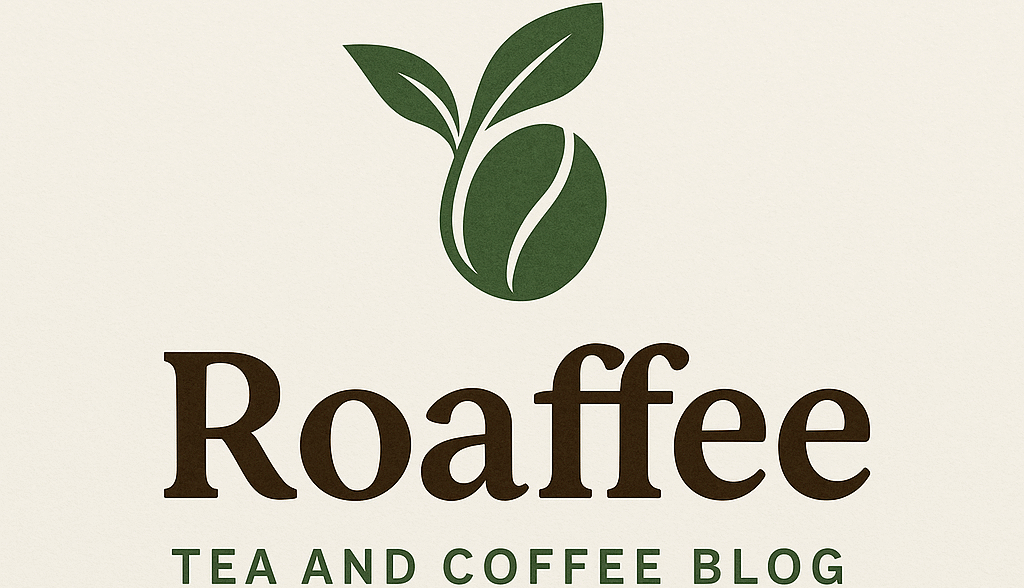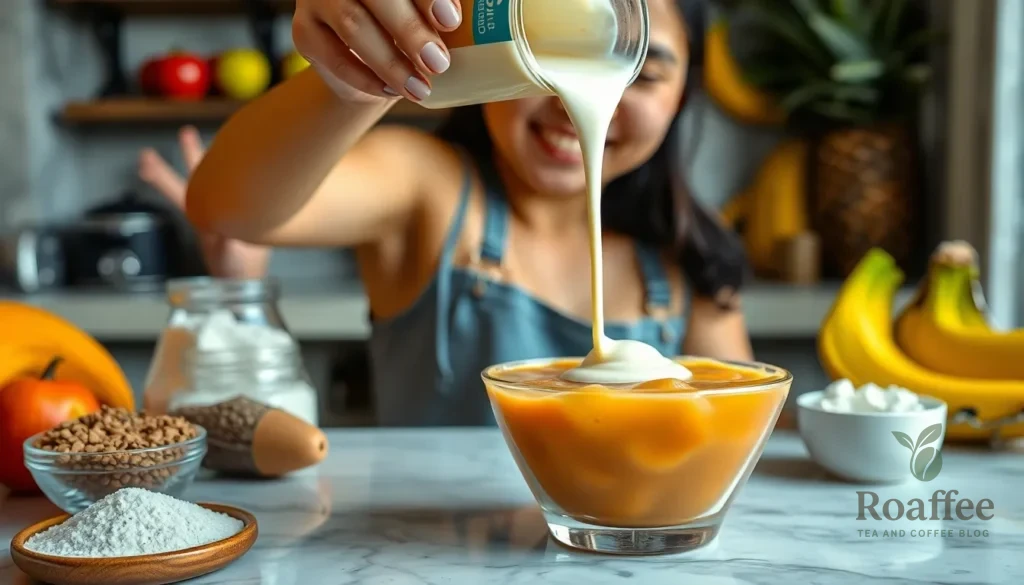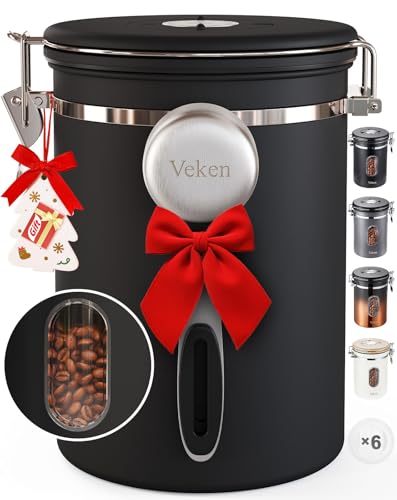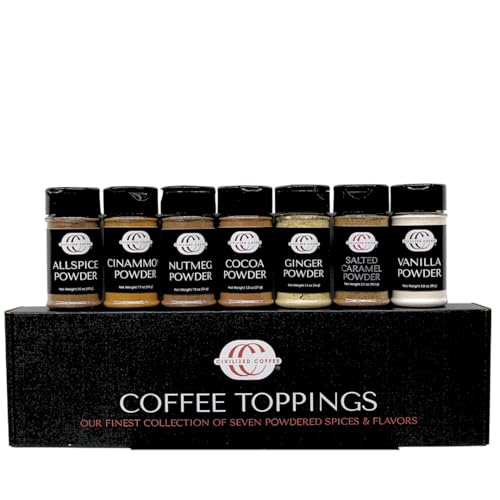We’re about to share one of the Philippines’ most beloved desserts that’ll transform your afternoon coffee break into something extraordinary. Coffee jelly became a nationwide obsession in the Philippines thanks to its perfect balance of rich coffee flavor and refreshing gelatin texture that’s impossible to resist.
This wobbly wonder started as a Japanese creation but found its true home in Filipino hearts and kitchens. We’ve perfected this recipe to capture that authentic Filipino coffee jelly experience – one that’s strong enough to satisfy serious coffee lovers yet sweet enough to please dessert enthusiasts.
What makes our version special? We’re using the right coffee-to-gelatin ratio that creates that signature firm-yet-tender bite that melts beautifully in your mouth. Whether you’re serving it at family gatherings or treating yourself to a midday pick-me-up, this coffee jelly delivers that nostalgic taste that’ll transport you straight to a Filipino café.
What Is Filipino Coffee Jelly
Filipino coffee jelly represents a beloved dessert that perfectly captures the essence of coffee culture in the Philippines. We recognize this treat as a simple yet satisfying combination of strong brewed coffee and unflavored gelatin that creates a refreshing dessert with a distinctive wobble.
The preparation involves dissolving gelatin in hot coffee to create a firm yet tender texture that melts gently on the tongue. Our version typically uses robust local coffee varieties that provide the deep bitter notes essential to authentic Filipino coffee jelly. Sugar balances the coffee’s intensity while allowing the beverage’s natural flavors to shine through.
Traditional Filipino coffee jelly differs from other international versions through its emphasis on strong coffee flavor rather than sweetness. We often serve it in small cubes or elegant molds that showcase the dessert’s translucent amber appearance. The texture should be firm enough to hold its shape yet tender enough to break apart easily with a spoon.
Many Filipino families prepare large batches during special occasions or weekend gatherings. We store the finished jelly in the refrigerator where it develops an even more pronounced coffee flavor over time. The dessert pairs wonderfully with sweetened condensed milk or a dollop of whipped cream for those who prefer a creamier experience.
Coffee jelly has become deeply integrated into Filipino dessert culture because it transforms everyday coffee into something special. We appreciate how this dessert extends our coffee enjoyment beyond the traditional hot beverage while providing a cooling treat perfect for our tropical climate.
Ingredients
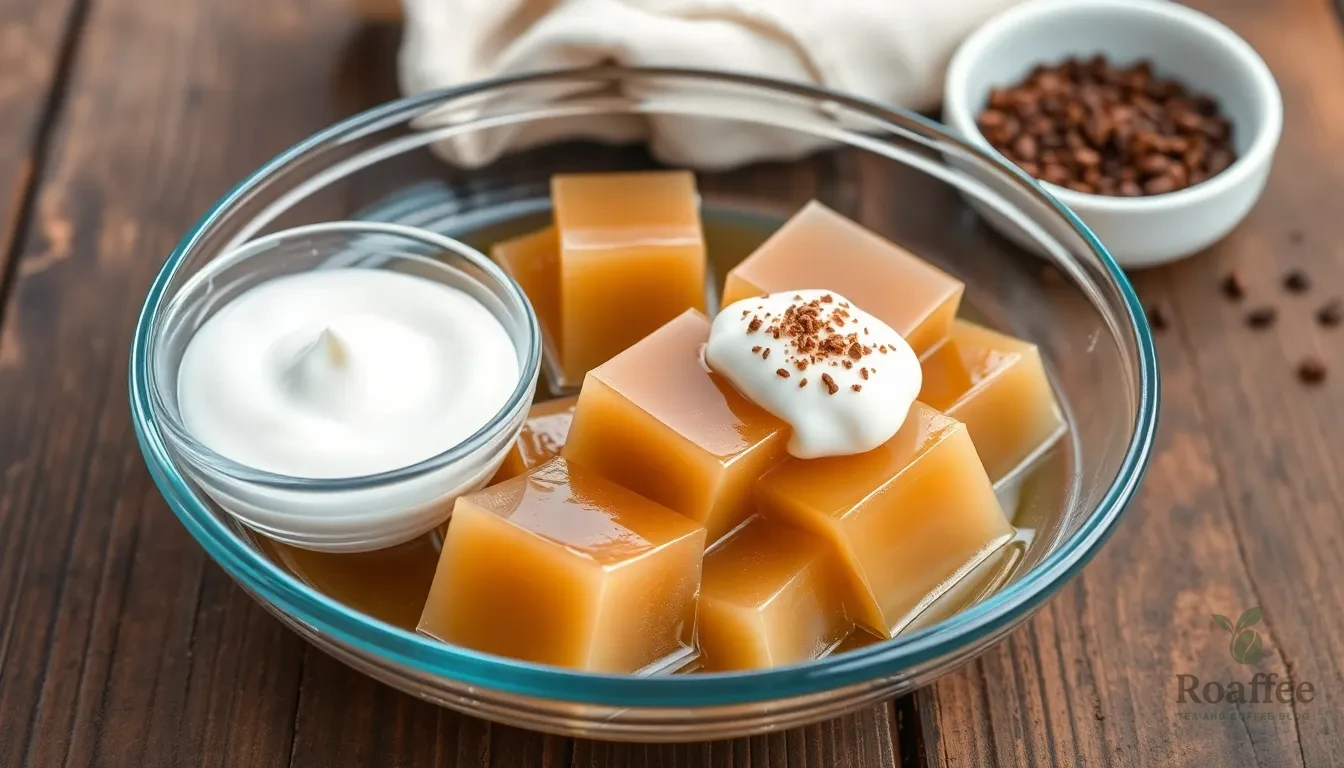
Creating authentic Filipino coffee jelly requires simple ingredients that deliver exceptional flavor and texture. We’ve carefully selected these components to ensure our coffee jelly achieves the perfect balance of strong coffee taste and smooth gelatin consistency.
For the Coffee Jelly
Essential Base Ingredients:
- 1 package (about 24 grams) Gulaman powder (Filipino agar-based gelatin) or unflavored gelatin
- 5 cups water (can adjust to 4 cups for thicker jelly)
- 4 tablespoons instant coffee granules (adjust to 6-7 tablespoons for stronger flavor)
- 2-7 tablespoons sugar (adjust depending on sweetness preference)
Using Gulaman powder creates a more authentic Filipino coffee jelly with superior texture compared to regular gelatin. This seaweed-based thickener produces a firmer consistency that doesn’t become rubbery when chilled. We recommend adjusting the water quantity based on your preferred thickness – less water creates a denser jelly that holds its shape better when cubed.
The coffee granules quantity directly impacts flavor intensity. Start with 4 tablespoons for moderate coffee taste or increase to 6-7 tablespoons for bold coffee lovers. Sugar amounts vary significantly based on personal preference, ranging from minimal sweetness to dessert-level sweetness.
For the Sweet Cream Topping
Creamy Accompaniment:
- 1 can condensed milk
- 1 can table cream (or heavy cream)
The sweet cream topping balances the coffee jelly’s bold flavor with rich creaminess. Condensed milk provides natural sweetness while table cream adds luxurious texture. Heavy cream serves as an excellent substitute for table cream if unavailable. We mix these ingredients until well combined and chill them separately to maintain optimal consistency when serving.
Equipment Needed
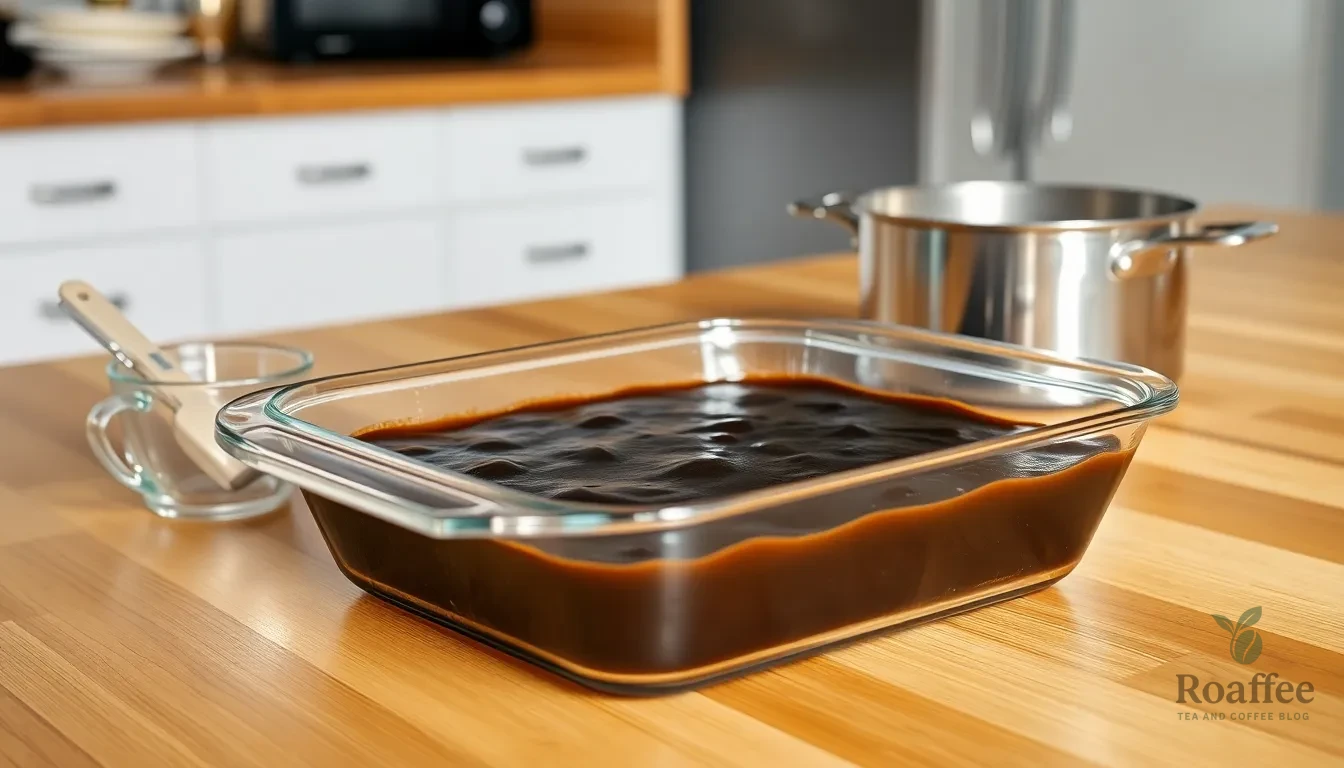
We need exact equipment to create perfect Filipino coffee jelly that achieves the ideal texture and consistency. Our kitchen setup requires basic tools that most home cooks already have available.
Essential Equipment:
- Casserole dish or baking dish – A 9 x 13 glass baking dish works perfectly for setting our coffee jelly
- Measuring spoons and cups – Accurate measurements ensure proper gelatin-to-liquid ratios
- Saucepan – Medium-sized pan for heating and dissolving our gelatin mixture
- Mixing spoon or whisk – Essential for thoroughly combining ingredients without lumps
- Refrigerator – Required for proper setting and chilling our finished jelly
- Knife – Sharp blade needed for cutting clean jelly cubes after setting
The casserole dish serves as our primary mold where the coffee gelatin mixture transforms into firm jelly. We recommend using glass dishes because they distribute heat evenly and make it easier to monitor the setting process. Metal pans work equally well but may affect cooling times slightly.
Our measuring tools ensure we achieve the perfect balance between coffee strength and gelatin firmness. Precise measurements become crucial when adjusting the water volume to create either thicker or softer jelly textures based on personal preferences.
The saucepan allows us to heat the mixture gradually while maintaining control over the dissolving process. We avoid rapid boiling which can compromise the gelatin’s setting properties and create an uneven texture in our final product.
Storage containers may also prove helpful for keeping leftover coffee jelly fresh in the refrigerator where it continues to develop deeper coffee flavors over time.
Instructions
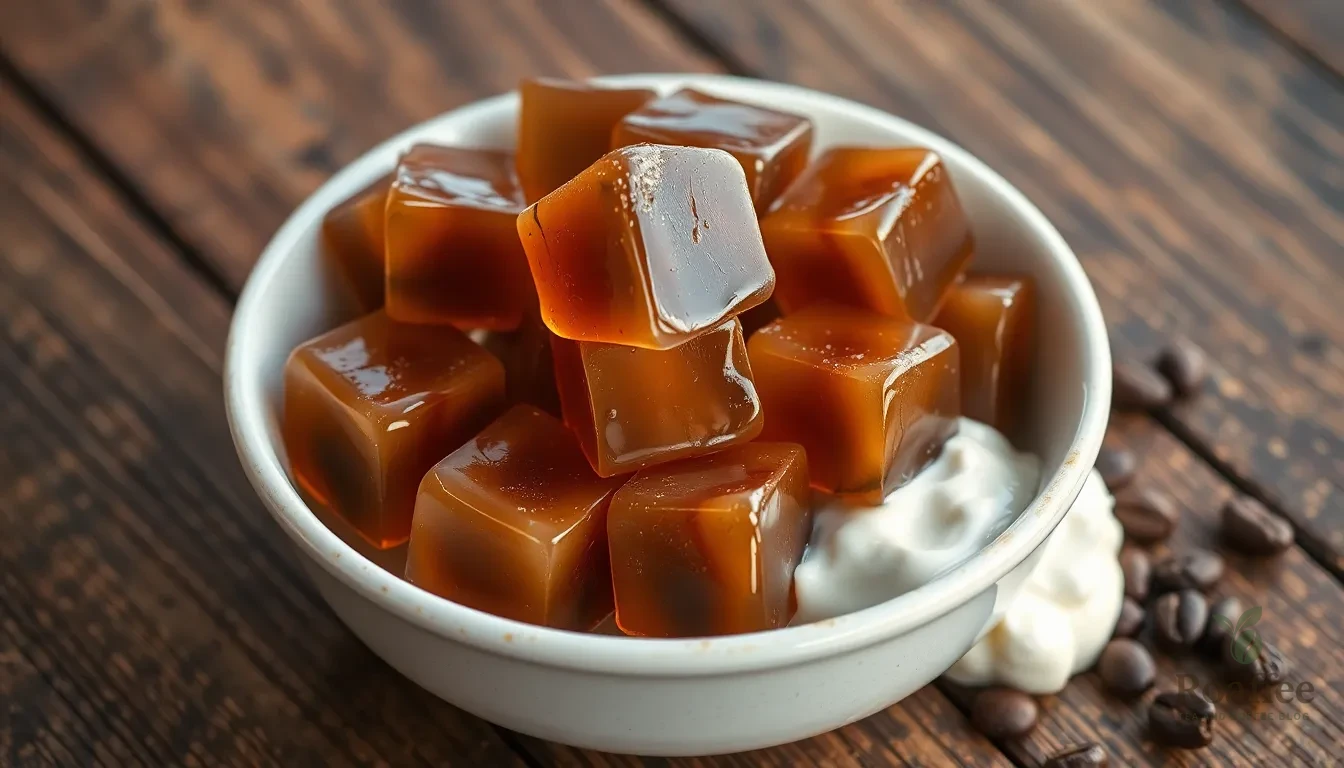
We’ll guide you through each step to create this delightful Filipino coffee jelly that perfectly balances rich coffee flavor with smooth gelatin texture. Follow these detailed instructions to achieve the ideal consistency and taste.
Prep the Coffee
We start by dissolving 2 tablespoons of instant coffee granules in water. Mix the coffee with room temperature water beforehand or add it directly during the cooking process. The coffee forms the foundation of our dessert’s bold flavor profile.
Dissolve the Gelatin
We sprinkle the gulaman powder or gelatin over room temperature water (about 4 cups) and let it bloom for 1-2 minutes. This blooming process ensures the gelatin dissolves completely without forming lumps. The gulaman powder creates a firmer texture compared to regular gelatin.
Combine Coffee and Gelatin
We combine the bloomed gelatin with 3 to 4 cups of water in a saucepan along with the instant coffee and sugar. Heat the mixture over medium heat while stirring constantly until the sugar and gelatin completely dissolve. We continue heating until the mixture reaches almost boiling point but avoid vigorous boiling which can affect the gelatin’s setting properties.
Set the Jelly
We pour the coffee-gelatin mixture into a shallow dish or 9×13 glass baking dish for even cooling. Allow the mixture to cool at room temperature before transferring to the refrigerator. The jelly sets within 1-3 hours until it becomes firm enough to cut. We cut the set jelly into small cubes for the final assembly.
Prepare the Cream Topping
We mix sweetened condensed milk and all-purpose cream in a large bowl until well combined. This creamy mixture balances the bold coffee flavor of the jelly cubes. The cream topping adds richness and sweetness to complement the coffee’s intensity.
Assemble and Serve
We add the coffee jelly cubes into the cream mixture and stir gently to coat each piece without breaking them. Chill the assembled dessert before serving to enhance the flavors. We serve this refreshing treat cold with optional ice cubes or use it as a topping for iced coffee drinks.
Tips for Perfect Filipino Coffee Jelly
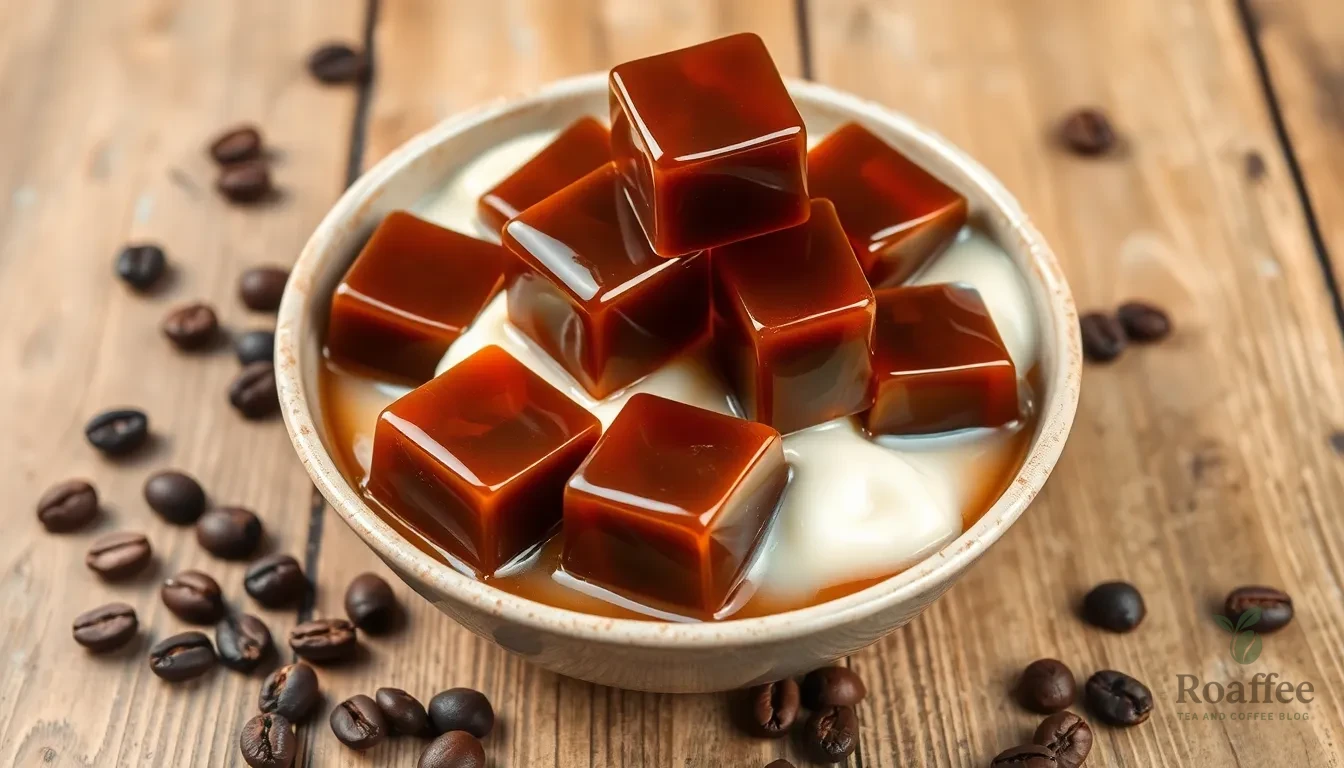
Master the Gulaman Powder Technique
We recommend using gulaman powder instead of Knox gelatin for achieving the authentic Filipino texture. This agar-based gelatin creates a firmer jelly that holds its shape better when cut into cubes. Dissolve the powder completely in room temperature water before heating to prevent lumps from forming.
Control Your Coffee Strength and Sweetness
Adjusting your coffee and sugar ratios makes all the difference in flavor balance. Start with 2-4 tablespoons of instant coffee granules and increase to 6-7 tablespoons for a stronger coffee taste. We suggest tasting the mixture before it sets to ensure the perfect balance between bitter coffee notes and sweetness.
Perfect Your Heating Process
Stir continuously while heating the mixture over medium heat to prevent clumping. Watch carefully as the mixture approaches boiling point since overheating can affect the gelatin’s setting properties. Remove from heat once everything dissolves completely and the mixture becomes smooth.
Achieve the Ideal Texture
| Water Amount | Texture Result |
|---|---|
| 5-6 cups | Standard firmness |
| 4 cups | Thicker consistency |
Reducing water from 5 cups to 4 cups creates a thicker jelly that holds its shape better when mixed with cream. This adjustment works especially well when serving the dessert in individual portions.
Optimize Your Setting Time
Refrigerate the jelly for at least 1-3 hours for faster setting or 3-4 hours for optimal firmness. We find that letting it cool at room temperature first speeds up the refrigeration process. The jelly should feel firm to the touch before cutting.
Cut with Precision
Use a sharp knife to cut the set jelly into uniform cubes approximately 1/4 inch in size. Clean cuts create neat cubes that distribute evenly throughout the cream mixture. Smaller cubes blend better with the creamy topping while larger pieces provide more coffee flavor in each bite.
Enhance the Cream Mixture
Combine sweetened condensed milk and all-purpose cream thoroughly before adding the jelly cubes. Some recipes benefit from adding a small amount of dissolved coffee diluted with water to the cream mixture for extra coffee flavor throughout the dessert.
Serve at the Right Temperature
Chill the final mixture until cold before serving to maximize the refreshing qualities of this tropical dessert. The contrast between the cool temperature and rich coffee flavor makes it particularly satisfying in warm weather.
Variations and Flavor Options
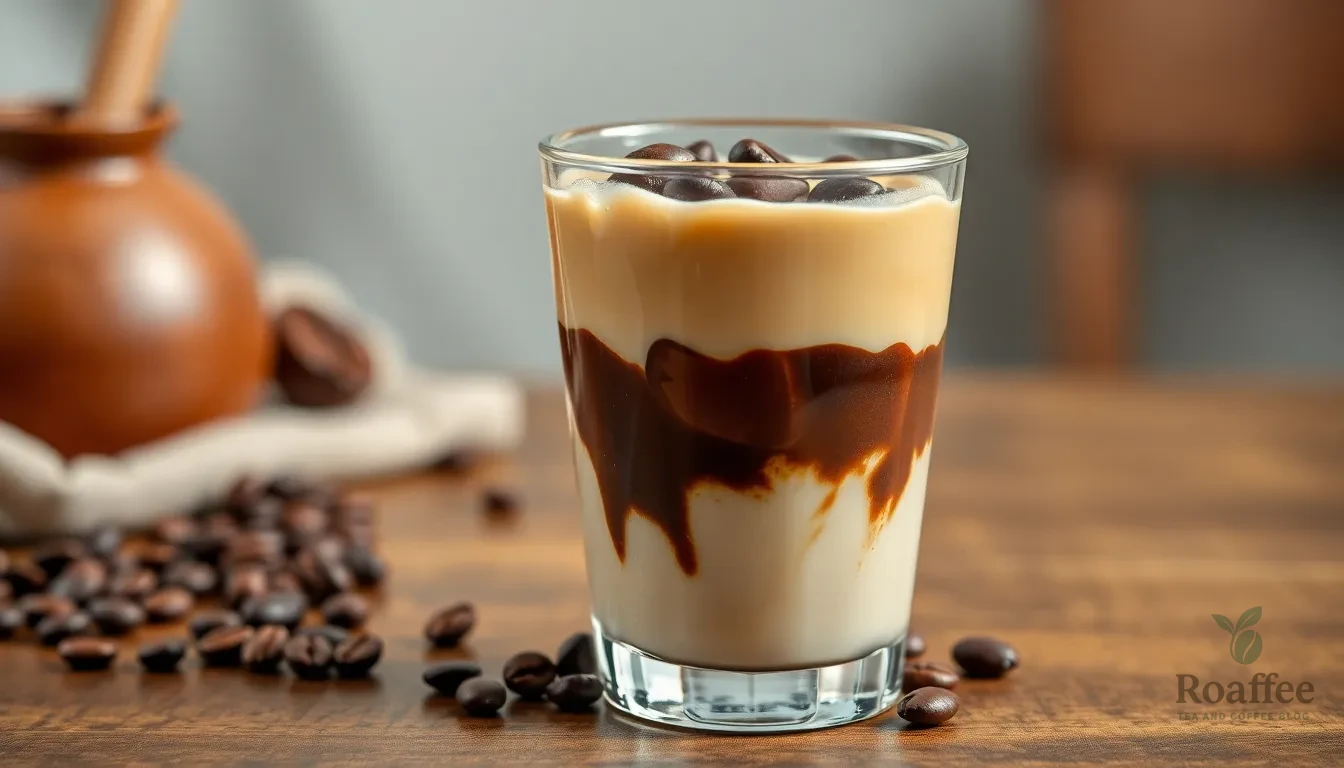
We can transform our traditional coffee jelly recipe into exciting variations that showcase different flavors and textures. These creative adaptations allow us to customize the dessert according to our preferences and add visual appeal to our presentation.
Cream Layers and Presentation
We recommend creating stunning tri-layer effects by incorporating different cream components throughout our coffee jelly. Evaporated milk serves as an excellent base for creating distinct layers that add both richness and visual drama to our dessert. We pour the cream mixture in stages, allowing each layer to partially set before adding the next, which creates beautiful striped patterns when served in clear glasses.
All-purpose cream whipped to soft peaks provides another layer option that adds luxurious texture. We fold this gently into our coffee jelly cubes just before serving to maintain the airy consistency that contrasts beautifully with the firm jelly texture.
Coffee Strength Customization
We can adjust our coffee intensity by varying the amount of instant coffee powder from 2 to 4 tablespoons depending on our desired strength. Strong coffee lovers benefit from using freshly brewed coffee instead of instant coffee, which delivers more complex flavors and aromatic notes to our jelly base.
Espresso powder creates an intensely rich variation that appeals to those who prefer bold coffee flavors. We substitute half the instant coffee with espresso powder to achieve this deeper taste profile without overpowering the sweetness balance.
Texture Enhancements
Mini sago pearls add delightful textural contrast to our coffee jelly. We cook these small pearls separately until translucent, then fold them into our coffee mixture before it sets. This creates interesting bursts of chewy texture that complement the smooth jelly consistency.
Coconut strips or young coconut meat provide tropical flair while adding natural sweetness. We incorporate these ingredients during the final mixing stage to maintain their distinct texture and flavor contribution.
Milk and Cream Variations
| Milk Type | Flavor Profile | Best Use |
|---|---|---|
| Coconut Milk | Rich, nutty, tropical | Vietnamese-inspired versions |
| Evaporated Milk | Creamy, slightly caramelized | Layer creation |
| Heavy Cream | Rich, luxurious | Whipped toppings |
| Condensed Milk | Sweet, thick | Traditional Filipino style |
Coconut milk creates Vietnamese-inspired variations that offer rich, nutty flavors with subtle chocolate undertones. We substitute half our regular milk with coconut milk to achieve this unique taste profile while maintaining the creamy consistency our dessert requires.
Presentation Styles
Japanese-inspired presentations involve serving our coffee jelly in tall parfait glasses with alternating layers of jelly cubes and whipped cream. We garnish these elegant servings with coffee beans or cocoa powder for sophisticated visual appeal.
Individual serving cups allow us to create personalized portions that guests can enjoy without additional serving utensils. We prepare these by layering coffee jelly cubes with our cream mixture in small glasses or ramekins.
Sweetness Modifications
We can reduce sugar content by half and compensate with natural sweeteners like honey or maple syrup for more complex flavor profiles. These alternatives provide subtle taste variations while maintaining the necessary sweetness balance our coffee jelly requires.
Condensed milk variations involve reducing added sugar and relying primarily on sweetened condensed milk for sweetness. This approach creates richer, more indulgent versions that appeal to those who prefer dessert-like consistency over refreshing lightness.
Storage Instructions
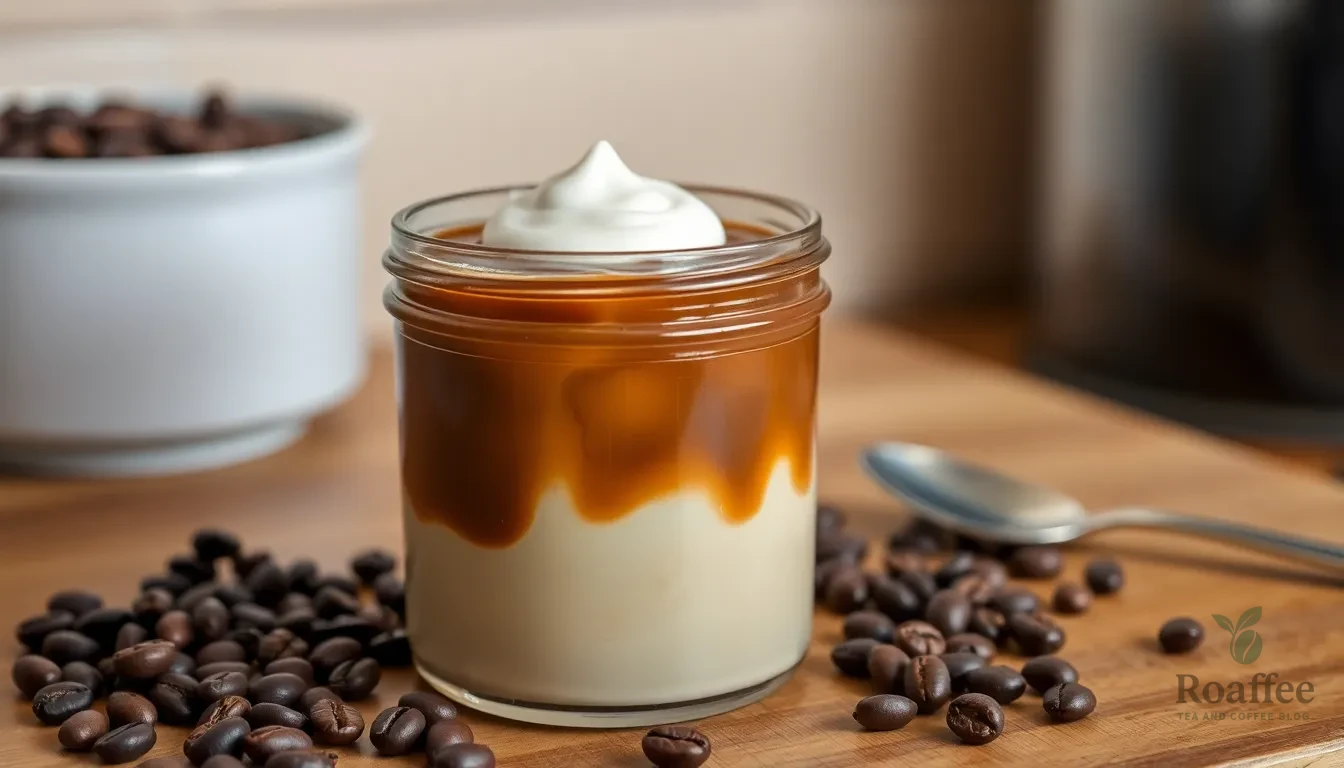
We recommend storing your Filipino coffee jelly in an airtight container to maintain its optimal texture and prevent it from absorbing other refrigerator odors. Alternatively, you can cover the surface directly with plastic wrap to create a protective barrier against drying out.
Refrigeration is essential for keeping your coffee jelly fresh and maintaining its firm yet tender consistency. We always place our finished coffee jelly in the refrigerator immediately after it has set completely.
Avoid freezing your coffee jelly as this process can make it watery and cause it to lose its signature smooth texture. The freezing and thawing process breaks down the gelatin structure, resulting in an unappetizing consistency.
For the best quality and flavor, we suggest preparing only the amount of coffee jelly you plan to serve immediately or within a few days. Fresh coffee jelly delivers the most satisfying taste and texture experience.
| Storage Method | Duration | Quality Notes |
|---|---|---|
| Refrigerated (airtight container) | 3-5 days | Maintains optimal texture and flavor |
| Refrigerated (plastic wrap) | 2-3 days | Prevents surface drying |
| Room temperature | Not recommended | Gelatin may break down |
| Frozen | Not recommended | Becomes watery and loses texture |
When storing your coffee jelly with the cream topping, we recommend keeping the components separate until serving time. This prevents the cream from becoming too thin and maintains the distinct layers that make this dessert so appealing.
Store any leftover cream mixture in a separate airtight container in the refrigerator for up to 3 days. The condensed milk and cream combination will thicken slightly over time, which actually enhances the overall dessert experience when served.
Serving Suggestions
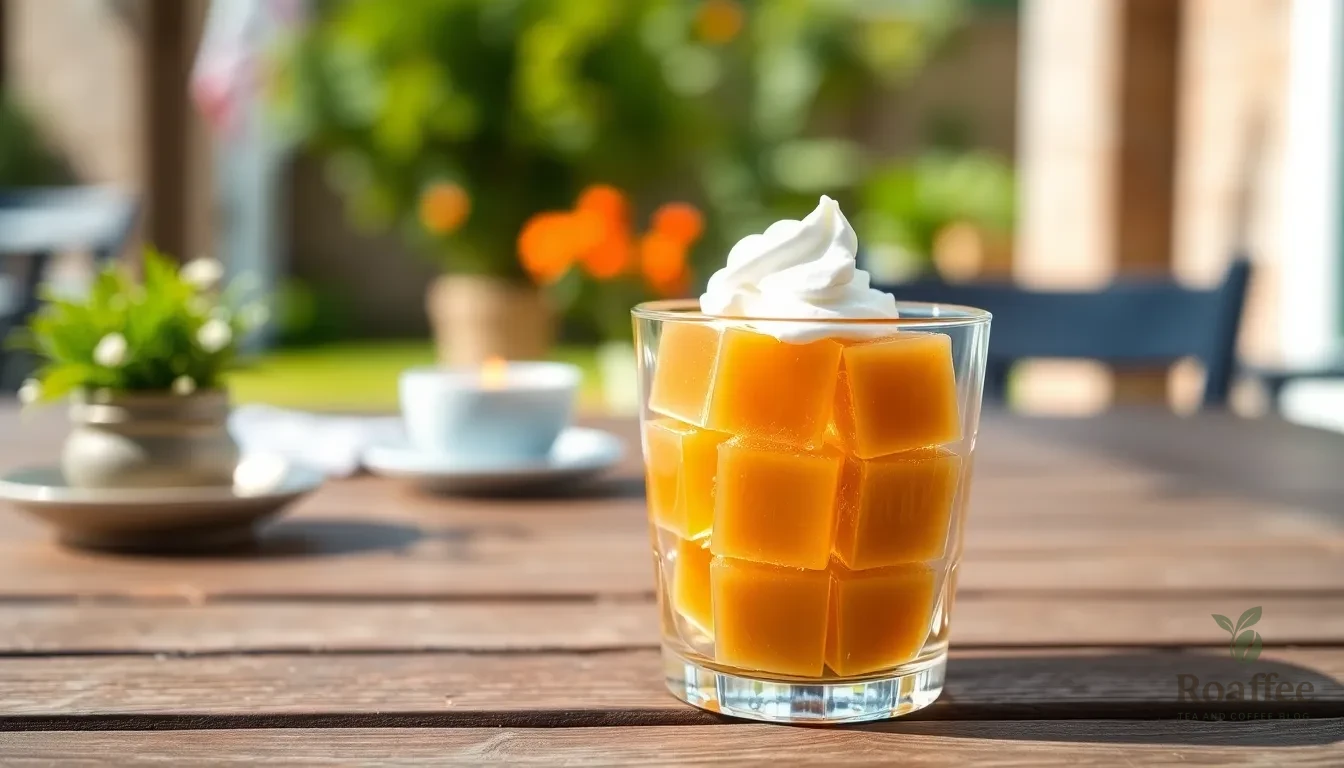
We recommend serving coffee jelly chilled as a refreshing dessert that perfectly balances the bold coffee flavor with creamy sweetness. This delightful treat works exceptionally well during hot weather when you need something cooling yet satisfying.
Our favorite presentation method involves spooning the coffee jelly cubes into individual cups or bowls with the prepared cream mixture. Each serving should contain generous portions of both the jelly and the creamy topping for the optimal flavor experience. We suggest using clear glasses to showcase the beautiful contrast between the amber coffee jelly and the pale cream mixture.
Coffee jelly serves as an excellent afternoon snack alongside your regular coffee routine. We often prepare it for family gatherings where guests can enjoy this unique dessert that captures the essence of Filipino coffee culture. The dessert pairs wonderfully with iced coffee drinks for those who want to double down on their caffeine experience.
For party presentations we recommend preparing individual servings in small cups or parfait glasses. This approach allows guests to easily enjoy the dessert without needing to share serving utensils. We also suggest garnishing each serving with a dollop of whipped cream to add extra richness and visual appeal.
The dessert works particularly well as a palate cleanser after heavy meals due to its light and refreshing nature. We find that coffee jelly satisfies both coffee lovers who crave that bold flavor and dessert enthusiasts who appreciate the smooth gelatinous texture.
When serving at casual gatherings we recommend providing spoons that allow guests to easily scoop both the jelly cubes and cream mixture together. This ensures every bite delivers the perfect balance of coffee intensity and creamy sweetness that makes Filipino coffee jelly so beloved.
Conclusion
We’ve shared everything you need to create this beloved Filipino dessert that perfectly captures the essence of coffee culture in the Philippines. This simple yet satisfying treat transforms your everyday coffee into something special with its unique gelatin texture and rich flavor profile.
The beauty of coffee jelly lies in its versatility – whether you prefer it strong and bold or sweet and creamy there’s a variation that’ll suit your taste. With our detailed recipe and helpful tips you’ll be able to achieve that perfect balance of firm yet tender texture that makes this dessert so irresistible.
Now it’s time to gather your ingredients and start making your own batch of authentic Filipino coffee jelly. We’re confident that once you try this refreshing dessert you’ll understand why it’s become such a cherished treat in Filipino households and cafés alike.
Frequently Asked Questions
What is Filipino coffee jelly?
Filipino coffee jelly is a beloved dessert that combines strong brewed coffee with gelatin to create a firm yet tender texture. Originally from Japan, it has become a staple in Filipino cuisine, featuring robust local coffee varieties and typically served with sweetened condensed milk or whipped cream for a refreshing treat.
What ingredients do I need to make Filipino coffee jelly?
The essential ingredients include Gulaman powder (Filipino agar-based gelatin), water, instant coffee granules, and sugar. For the cream topping, you’ll need sweetened condensed milk and table cream or heavy cream. All ingredients can be adjusted based on your taste preferences for coffee strength and sweetness.
What equipment is needed to make coffee jelly?
You’ll need a casserole dish, measuring spoons and cups, a saucepan, a mixing spoon or whisk, refrigerator access, and a knife for cutting. A glass baking dish is recommended for even heat distribution, and accurate measuring tools are crucial for achieving the perfect gelatin-to-liquid ratio.
How do I achieve the perfect coffee jelly texture?
Use Gulaman powder for authentic texture and bloom it properly in water before heating. Heat the mixture gradually to prevent clumping and ensure smooth dissolution. The key is maintaining the right coffee-to-gelatin ratio and allowing proper setting time in the refrigerator for optimal firmness.
How should I store coffee jelly?
Store coffee jelly in an airtight container in the refrigerator to maintain texture and prevent odor absorption. Never freeze it, as this compromises the smooth texture. Keep the cream topping separate until serving to maintain appealing layers. Leftover cream can be stored separately for a few days.
What are some variations I can try with coffee jelly?
You can create tri-layer effects with different cream components, adjust coffee strength using espresso powder, or add texture with mini sago pearls or coconut strips. Try different milk and cream combinations, serve in parfait glasses Japanese-style, or use natural sweeteners to reduce sweetness according to your preferences.
How should Filipino coffee jelly be served?
Serve coffee jelly chilled to balance the bold coffee flavor with creamy sweetness. Present it in clear cups or bowls to showcase the contrast between amber jelly and pale cream. It’s perfect as an afternoon snack or palate cleanser, and always provide spoons for easy scooping of both components.
